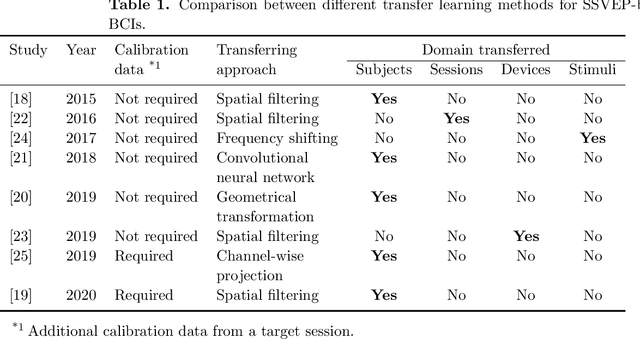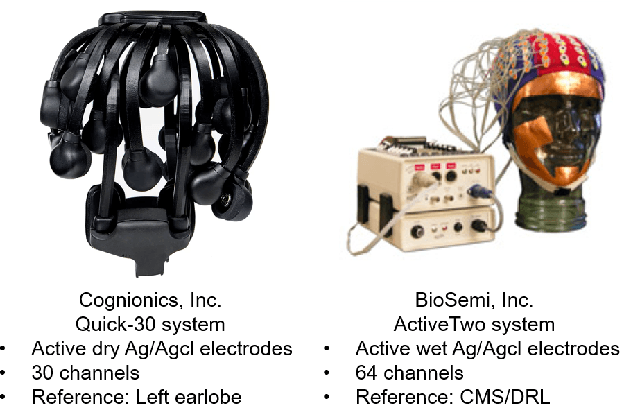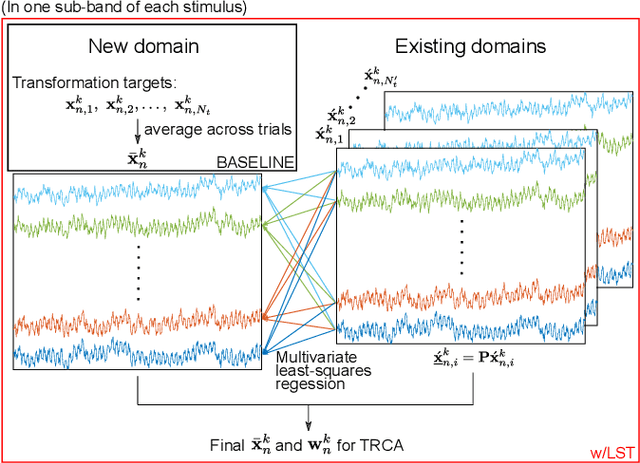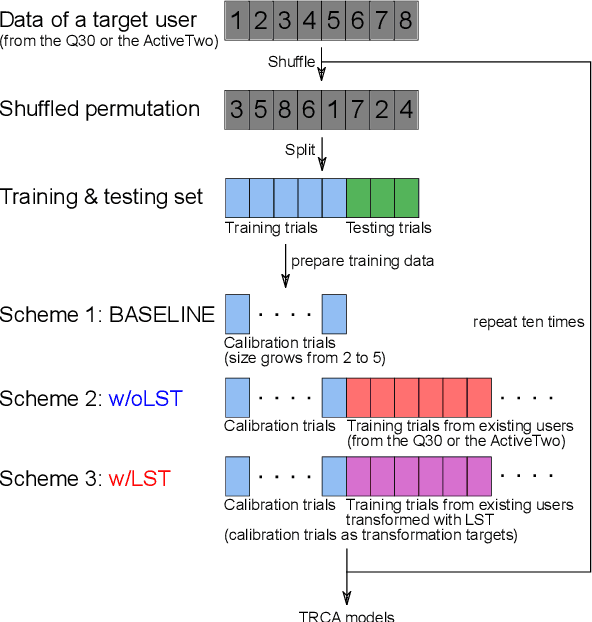Kuan-Jung Chiang
SSVEP-DAN: A Data Alignment Network for SSVEP-based Brain Computer Interfaces
Nov 21, 2023Abstract:Steady-state visual-evoked potential (SSVEP)-based brain-computer interfaces (BCIs) offer a non-invasive means of communication through high-speed speller systems. However, their efficiency heavily relies on individual training data obtained during time-consuming calibration sessions. To address the challenge of data insufficiency in SSVEP-based BCIs, we present SSVEP-DAN, the first dedicated neural network model designed for aligning SSVEP data across different domains, which can encompass various sessions, subjects, or devices. Our experimental results across multiple cross-domain scenarios demonstrate SSVEP-DAN's capability to transform existing source SSVEP data into supplementary calibration data, significantly enhancing SSVEP decoding accuracy in scenarios with limited calibration data. We envision SSVEP-DAN as a catalyst for practical SSVEP-based BCI applications with minimal calibration. The source codes in this work are available at: https://github.com/CECNL/SSVEP-DAN.
Using EEG Signals to Assess Workload during Memory Retrieval in a Real-world Scenario
May 14, 2023Abstract:Objective: The Electroencephalogram (EEG) is gaining popularity as a physiological measure for neuroergonomics in human factor studies because it is objective, less prone to bias, and capable of assessing the dynamics of cognitive states. This study investigated the associations between memory workload and EEG during participants' typical office tasks on a single-monitor and dual-monitor arrangement. We expect a higher memory workload for the single-monitor arrangement. Approach: We designed an experiment that mimics the scenario of a subject performing some office work and examined whether the subjects experienced various levels of memory workload in two different office setups: 1) a single-monitor setup and 2) a dual-monitor setup. We used EEG band power, mutual information, and coherence as features to train machine learning models to classify high versus low memory workload states. Main results: The study results showed that these characteristics exhibited significant differences that were consistent across all participants. We also verified the robustness and consistency of these EEG signatures in a different data set collected during a Sternberg task in a prior study. Significance: The study found the EEG correlates of memory workload across individuals, demonstrating the effectiveness of using EEG analysis in conducting real-world neuroergonomic studies.
Boosting Template-based SSVEP Decoding by Cross-domain Transfer Learning
Feb 10, 2021



Abstract:Objective: This study aims to establish a generalized transfer-learning framework for boosting the performance of steady-state visual evoked potential (SSVEP)-based brain-computer interfaces (BCIs) by leveraging cross-domain data transferring. Approach: We enhanced the state-of-the-art template-based SSVEP decoding through incorporating a least-squares transformation (LST)-based transfer learning to leverage calibration data across multiple domains (sessions, subjects, and EEG montages). Main results: Study results verified the efficacy of LST in obviating the variability of SSVEPs when transferring existing data across domains. Furthermore, the LST-based method achieved significantly higher SSVEP-decoding accuracy than the standard task-related component analysis (TRCA)-based method and the non-LST naive transfer-learning method. Significance: This study demonstrated the capability of the LST-based transfer learning to leverage existing data across subjects and/or devices with an in-depth investigation of its rationale and behavior in various circumstances. The proposed framework significantly improved the SSVEP decoding accuracy over the standard TRCA approach when calibration data are limited. Its performance in calibration reduction could facilitate plug-and-play SSVEP-based BCIs and further practical applications.
 Add to Chrome
Add to Chrome Add to Firefox
Add to Firefox Add to Edge
Add to Edge